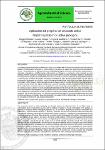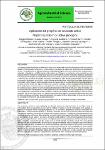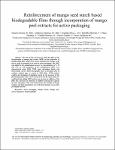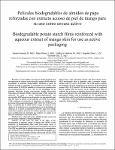| dc.contributor.author | Rebaza, Rogger | |
| dc.contributor.author | Amaya, Laura | |
| dc.contributor.author | Gutiérrez, Anghela | |
| dc.contributor.author | Haro, Ronald | |
| dc.contributor.author | Tumbajulca, Marlon | |
| dc.contributor.author | Valera, Flor | |
| dc.contributor.author | Vargas, Yordin | |
| dc.contributor.author | Barraza-Jauregui, Gabriela | |
| dc.contributor.author | León, Jackeline | |
| dc.contributor.author | Sánchez-González, Jesús | |
| dc.date.accessioned | 2021-06-13T15:34:54Z | |
| dc.date.available | 2021-06-13T15:34:54Z | |
| dc.date.issued | 2016-11-03 | |
| dc.identifier.citation | Rebaza, R. ...[et al]. (2016). Aplicación del propóleo en envasado activo [Propoli's aplication on active packaging]. Agroindustrial Science, 6(2), 239-252. http://dx.doi.org/10.17268/agroind.science.2016.02.09 | es_PE |
| dc.identifier.uri | https://hdl.handle.net/11537/26828 | |
| dc.description.abstract | RESUMEN
Las investigaciones relacionadas con el envasado activo están encaminados hacia la caracterización de nuevas películas basadas en hidrocoloides de fuentes no convencionales y la adición de agentes que proporcionen funcionalidad al envase. A los propóleos se les atribuyen diferentes propiedades biológicas, tales como: antitumorales, antiprotozoarias, antivirales, antioxidantes, antiinflamatorias, antibacteriales y antifúngicas; en particular, se ha encontrado que esta sustancia inhibe el desarrollo de patógenos de poscosecha como Botrytis cinerea y Penicillium expansum. El efecto de la incorporación de propóleo en propiedades funcionales de películas de quitosano, dentro de las propiedades estudiadas se determinó que la adición de propóleo redujo la permeabilidad de vapor de agua en las películas. Por otro lado, la incorporación de propóleo en películas a base de hidroxipropilmetilcelulosa, dieron lugar a una ligera disminución en la densidad y el pH. Respecto a las propiedades mecánicas, las películas de propóleo mostraron mayor alargamiento a la rotura (%) y los valores más bajos de resistencia a la tracción y módulos elásticos. El estudio permitió demostrar el efecto antibacteriano de ambos extractos de propóleo (los extractos etanólicos de propóleo fueron más efectivos que los extractos acuosos), además de que la actividad antibacteriana depende del lugar del que se extrae el propóleo y de la resistencia de estos microorganismos, siendo que las bacterias Gram-positivas son más susceptibles que las bacterias Gram-negativas. Las películas que contienen propóleos mostraron una notable actividad antifúngica contra los hongos ensayados, que fue más intensa frente a A. nigerthan contra Penicillium specie y componentes del propóleo tales como la rutina, quercetina y naringenina fueron los principales compuestos fenólicos del propóleo por lo que a la vez fueron los principales contribuyentes a la actividad antioxidante. | es_PE |
| dc.description.abstract | ABSTRACT
The researches related to active packaging are directed towards the characterization of new films based on hydrocolloids from unconventional sources and the addition of agents to provide functionality to the package. A propolis are attributed different biological properties such as: anti-tumor, antiprotozoal, antiviral, antioxidant, antiinflammatory, antibacterial and antifungal; in particular, it has been found that this substance inhibits the development of postharvest pathogens such as Botrytis cinerea and Penicillium expansum. The effect of incorporating propolis into functional properties of chitosan films within the properties studied determined that the addition of propolis reduced the permeability of water vapor in the movies. Otherwise propolis addition in films to hydroxypropyl methylcellulose base, gave in a slight decrease in the density and pH. Regarding the mechanical properties, the films of propolis showed higher elongation at break (%) and the lowest values of tensile strength and elastic moduli. The study allowed demonstrating the antibacterial effect of both extracts of propolis (ethanolic extracts of propolis were more effective than the aqueous extracts), in addition to the antibacterial activity it depends on the place that propolis is extracted and resistance of these microorganisms, It is that the Gram-positive bacteria are more susceptible than Gram-negative bacteria. Ls films containing propolis showed remarkable antifungal activity against fungi tested, which was stronger against A. nigerthan against Penicillium specie and components of propolis such as rutin, quercetin and naringenin were the major phenolic compounds of propolis so to both were the main contributors to antioxidant activity. | es_PE |
| dc.format | application/pdf | es_PE |
| dc.language.iso | spa | es_PE |
| dc.publisher | Universidad Nacional de Trujillo | es_PE |
| dc.rights | info:eu-repo/semantics/openAccess | es_PE |
| dc.rights | Atribución-NoComercial-CompartirIgual 3.0 Estados Unidos de América | * |
| dc.rights.uri | https://creativecommons.org/licenses/by-nc-sa/3.0/us/ | * |
| dc.source | Universidad Privada del Norte | es_PE |
| dc.source | Repositorio Institucional - UPN | es_PE |
| dc.subject | Envases | es_PE |
| dc.subject | Antioxidantes | es_PE |
| dc.subject | Agentes antibacterianos | es_PE |
| dc.title | Aplicación del propóleo en envasado activo [Propoli's aplication on active packaging] | es_PE |
| dc.type | info:eu-repo/semantics/article | es_PE |
| dc.publisher.country | PE | es_PE |
| dc.identifier.journal | Agroindustrial Science | es_PE |
| dc.subject.ocde | https://purl.org/pe-repo/ocde/ford#2.11.00 | es_PE |
| dc.description.sede | Trujillo San Isidro | es_PE |
| dc.identifier.doi | http://dx.doi.org/10.17268/agroind.science.2016.02.09 | |







